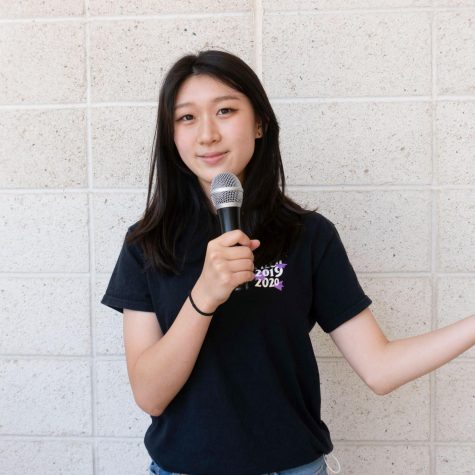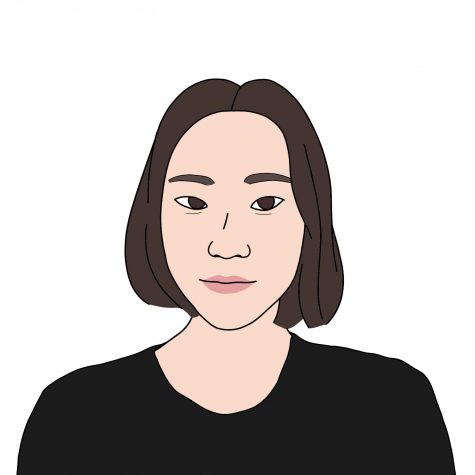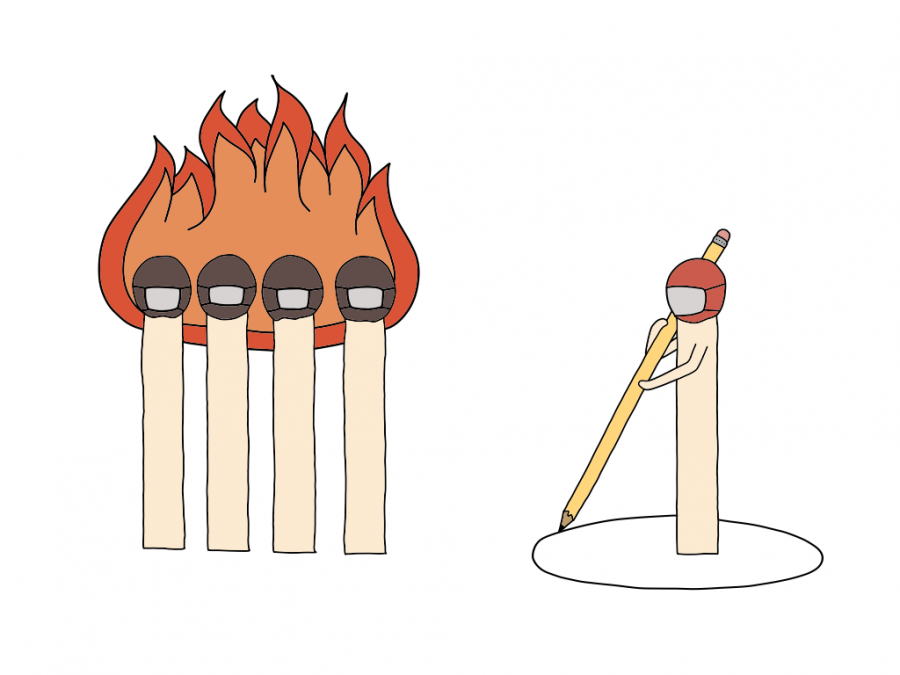Lifting Stay-at-Home Orders? Absolutely Not.
Without social distancing, one Coronavirus infectee will on average infect 2.5 people within five days, which will result in 406 new cases after 30 days, according to Statistica. The number significantly decreases when practicing physical distancing, which can contribute to “flattening the curve” of new infections. If 50% of the infected patients self-quarantine themselves, there will only be 15 new cases after 30 days, and there will be 2.5 new cases if 75% of the infected practice physical distancing.
Alongside the empty bay of Newport Beach on April 20, a mob stands in front of the civic center with bolded messages on signs reading “Freedom” and “Open Work.”
About a month into the stay-at-home order issued by Gov. Gavin Newsom on March 19, citizens voiced their unwillingness to continue physical distancing, not understanding the importance of it. Citizens immediately need to stop all protests to reopen California while the governor maintains caution with his decisions until situations settle.
The gathering, following previous protests in San Clemente and Huntington Beach, urges California’s stay-at-home orders to be lifted. President Donald Trump also tweeted on April 17 regarding his proposal to reopen rural areas of America.
Opponents to the stay-at-home orders stated closing beaches and public facilities infringes on their constitutional rights and mentioned their concerns for California’s economy, as 2.7 million Californians had filed for unemployment as of April 15.
However, the government needs to prioritize public health in order to prevent the economy from halting even longer. California is also working to minimize harm to citizens, as Newsom plans to aid illegal and legal residents and enact more laws to assist families, like the Families First Coronavirus Response Act, California Paid Family Leave and California Family-School Partnership Act.
California’s confirmed cases are still increasing, which makes physical distancing essential for preventing the amount of infected individuals from growing at an exponential rate. Areas that started physical distancing the earliest, such as San Francisco, have been noticing the slowed rate of new cases, according to Vox.
Although the pace has been slowing compared to other states, reopening the state too early can result in an extended stay-at-home order, which disregards the economic risks and impacts that have already been made.
Dr. Howard Markel, professor of the history of medicine at the University of Michigan, used the 1918 flu pandemic as an example of pulling back on physical distancing early, as U.S. cities that opened physical distancing orders too soon during the circulating flu virus immediately saw a new rise in cases.
“If you pull the triggers off too early, not only is there a circulating virus to do what it naturally does, but you will have incurred all the economic and social disruptions of [stay-at-home orders] for nothing,” Markel said in a webinar hosted by the American Public Health Association.
Social distancing is crucial to prevent further delays in reopening California and limiting additional cases. Students and residents need to recognize this importance and continue to self-quarantine themselves until additional orders are given.
Your donation will support the student journalists of Portola High School. Your contribution will allow us to purchase equipment and cover our annual website hosting costs.

Bia Shok is the co-news editor for her third and final year on the Pilot! She is super excited to expand the Pilot’s influence even further this year...

Jaein Kim is the Director of Photography this year on the Portola Pilot. She is extremely passionate about visual media ranging from digital art to videography...







michellekim | Apr 22, 2020 at 1:30 pm
I fully agree. Love the deep insight and reputable sources brought up in this article!